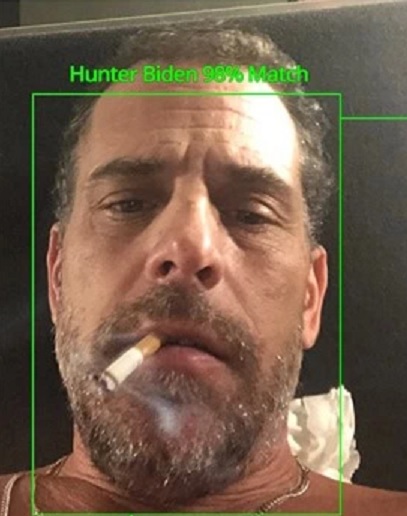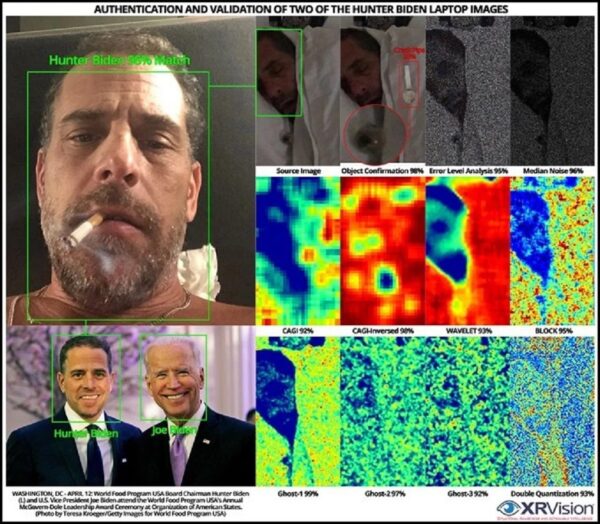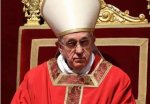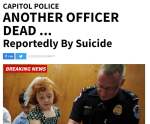
The Biden Campaign claims that the reports coming out from the New York Post about Hunter Biden are not true. Unfortunately for them, we have AI (artificial intelligence) analysis that proves that Hunter Biden is indeed the man with the crack pipe in his mouth like a baby sleeping with a pacifier.
The New York Post dropped its second major report on Hunter Biden’s emails on Tuesday. The Hunter Biden emails reveal how Hunter Biden worked to cash in big on China and to withhold money for his dad!
Joe Biden was IN ON IT!
DAY 2 BOMBSHELL: Newly Released Emails Show How Hunter Biden Worked to Cash in Big on China WITH MONEY HELD FOR HIS DAD, JOE BIDEN!
TRENDING: DAY 2 BOMBSHELL: Newly Released Emails Show How Hunter Biden Worked to Cash in Big on China WITH MONEY HELD FOR HIS DAD, JOE BIDEN!
In response to these devastating reports Twitter has censored and banned several Trump accounts including White House spokesperson Kayleign McEnany and the Team Trump account and the Biden Campaign is using Twitter’s censorship as “proof” that the email reports from Hunter Biden’s campaign are “false and are not true.”
The far-left Business Insider reported, like other Biden apologists, that the emails released by the New York Post were riddled with red flags.
So we decided to determine the accuracy of the emails in question.
Yaacov Apelbaum at the Illustrated Primer, a contributor at the Gateway Pundit, provided an analysis of the picture of Hunter Biden with a crack pipe to determine whether the picture was accurate. Apelbaum used AI to determine the accuracy.

In the emails were a couple of pictures of Hunter Biden. One picture is Hunter with a cigarette in his mouth and the other is Hunter asleep with a crack pipe in his mouth.
The pictures were compared to a known picture of Hunter Biden with his father Joe Biden.
Using AI we were able to determine that it was indeed Hunter in the pictures provided by the New York Post. Hunter Biden is the man with the cigarette in his mouth and he is the man with the crack pipe as well. We also analyzed the crack pipe and determined using AI (XRVision) it conclusively is a crack pipe.
Next Yaacov performed a battery of tests using XRVision Sentinel AI Platform (Face recognition, image reconstruction, and object classification) to determine that the pictures weren’t doctored in any way.
Apelbaum performed a battery of forensic image analysis tests that included functions such as:
Double Quantization – These types of inconsistencies occur when a foreign object is inserted in a JPEG image. When the new image is saved, the untampered part of the image will have been compressed twice, while the inserted region only once. In this case, the tampered area should appear red while the rest of the image blue. If other colors are present (green, yellow) then no conclusion can be made.
Error Level Analysis – These types of inconsistencies are produced by recompressing the image as a JPEG of quality 75 and subtracting the new image from the old. The resulting image of differences is then enhanced and displayed. Areas of interest are those with higher values than other similar parts of the image. Only similar regions should be compared, i.e. edges should be compared to edges, textures to textures, and uniform regions to uniform regions. Color discrepancies (commonly blue regions) are also generally suspicious.
Median Noise Residuals – These type of inconsistencies are based on isolating the almost-invisible image noise through median filtering. When interpreting the results, areas of interest are those that return higher (i.e. brighter) values than other similar parts of the image. Only similar regions are compared, i.e. edges are compared to edges, textures to textures, and uniform regions to uniform regions.
Compression anomalies 1 – JPEG compression operates in an 8-by-8 grid, which is near-invisible but detectable. Adding or moving an object on an image may locally disrupt this grid. The GRIDS algorithm seeks such discrepancies, and highlights them locally. The algorithm produces local red/orange “blobs” where it detects grid discrepancies. Generally, the GRIDS algorithm is less distracted by textures in the image, and focuses on grid disturbances.
Compression anomalies 2 – JPEG compression operates in an 8-by-8 grid, which is near-invisible but detectable. Adding or moving an object on an image may locally disrupt this grid. The GRIDS-Inverse algorithm is complementary to GRIDS in seeking such discrepancies. The algorithm produces local blue “blobs” where it detects grid discrepancies. Generally, the GRIDS algorithm is less distracted by textures in the image, and focuses on grid disturbances. However, it should mostly be interpreted in combination with other algorithm outputs that highlight the same regions.
Compression anomalies 3 – JPEG compression operates in an 8-by-8 grid, which is near-invisible but detectable. Adding or moving an object on an image may locally disrupt this grid. The BLOCK algorithm detects the image grid and looks for local discrepancies. Any coherent region with different color to its surroundings may correspond to tampering, although reds and yellows against a blue background are the most typical indication of tampering.
Compression anomalies 4 – The JPEG Ghosts algorithm is based on recompressing the image in multiple different qualities and subtracting each of them from the original. The resulting difference images are post-processed to highlight regions that stand out and are likely to originate from a different JPEG image. Then, the images most likely to contain interesting findings are selected (i.e. those that feature localized inconsistencies). Consistent yellow regions against a blue background may correspond to traces of tampering, especially if they do not correspond to edges, but to entire regions.
Noise anomalies – Each image carries invisible, high-frequency noise that is the result of the capturing process as well as the compression. The Discrete Wavelet Noise algorithm filters the image and calculates the local noise distribution at each part of the image. Regions that differ from the rest of the image are highlighted in strong red, and are likely to originate from other images.








